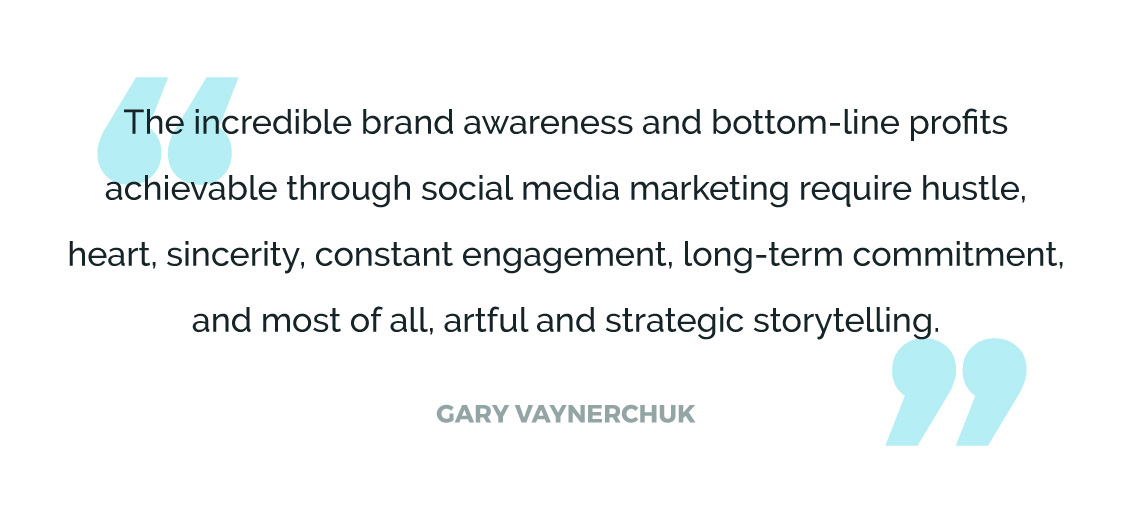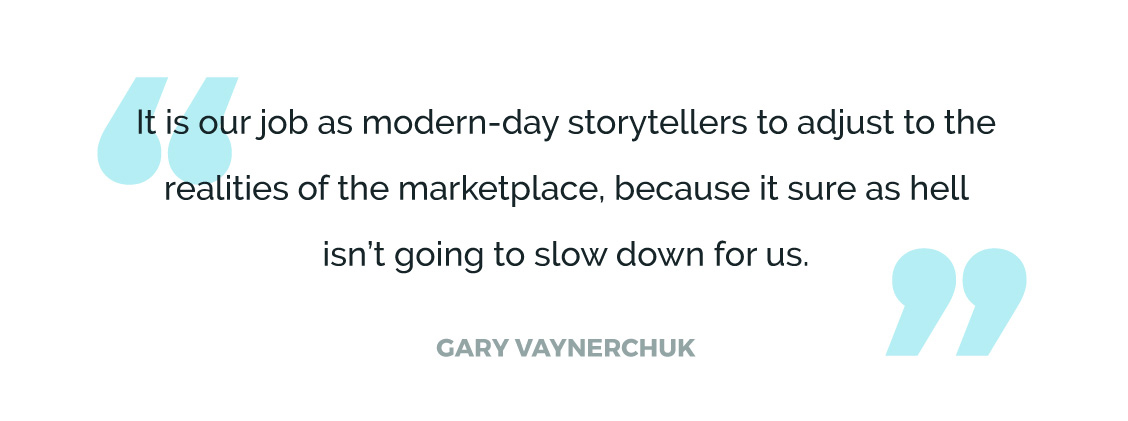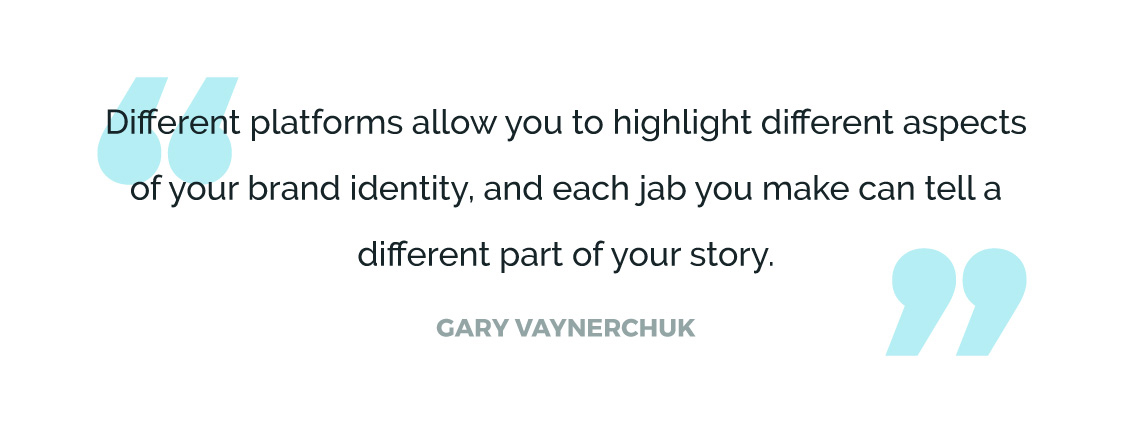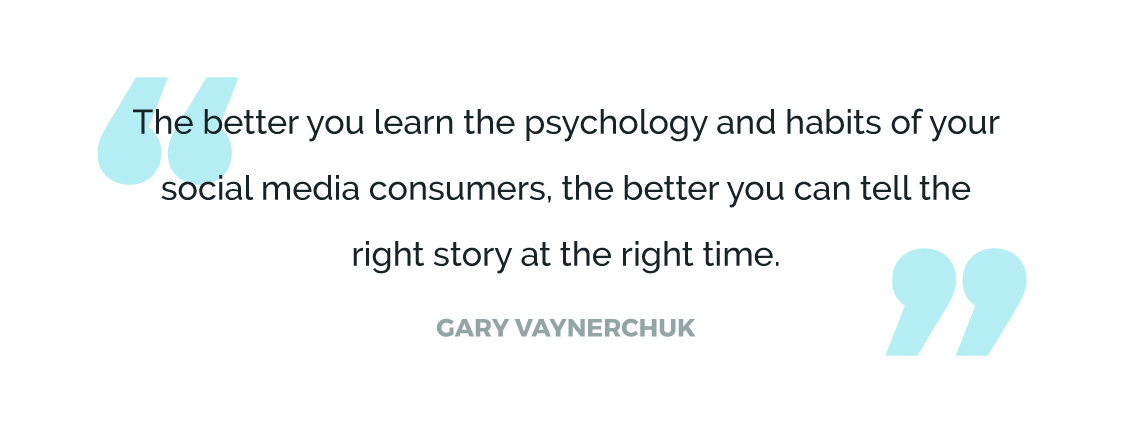More than 2.8 billion people. That’s how many active users were on social media at the beginning of 2017. Today that number is already higher and it will continue to escalate.
What that means for us good-hearted content marketers? Noise. Lots and lots of noise.

In Gary Vee’s cult classic, Jab, Jab, Jab, Right Hook: How to Tell Your Story in a Noisy Social World, he reminds us that we are fighting a never-ending boxing match on social media. We have to throw out storytelling jabs and right hooks with great skill to build our brand. You don’t have to be a boxer for this analogy to ring true.
The content creation cycle for social media is an aggressive one. To stay in the match, it takes hustle and agility. But to win? It takes skill and storytelling. Get ready to reignite your social media strategy by becoming a better storyteller.
The State of Social Media Marketing Today
Have you been in social media marketing for more than five years? Then you know exactly how much has changed during that time. Remember unobstructed Facebook referral traffic, without the algorithm mind games? Those were the days.
For better or worse, now we have ALL the brands on social. It doesn’t matter if you’re a team of one or a team of many, we are all experiencing the struggle together: to fight through the noise with our content creation efforts.
In Social Media Examiner’s 2017 Industry Report, it’s clear that we are trying to fight by exerting more energy:
- A whopping 64% of marketers are using social media for 6 hours or more, and 41% for 11 hours or more weekly; 20% of marketers spend more than 20 hours each week on social media.
- Over the next 12 months, marketers plan to increase posting activities on all major social media channels: Facebook (68%), Instagram (63%), Twitter (56%), LinkedIn (55%), and Pinterest (37%).
- For content types, marketers plan to increase their use of videos (75%), visuals (73%), blogging (65%), live video (61%), and podcasting (26%).
- And lots of ads… Marketers plan on increasing their use of Facebook ads (64%), Instagram ads (42%), YouTube ads (31%), Twitter ads (30%), and LinkedIn ads (29%).
We are spending even more time on social media. We are posting more than ever before. But, is that the best move in the current social media landscape? Is “more” actually “better?”
Pause Your Content Creation Cycle to Regroup
It’s time for you to do the thing you never do with social media: Hit the pause button. Don’t panic — that doesn’t mean going dark on your social channels and making people think you went out of business.
Keep going with your current strategy, but pause future content creation. The content cycle never stops with social media. This is your chance to take a much needed breather to strategize and prepare for a relaunch. Think of it as a spiritual retreat for your creative marketing mind.
Ask yourself some questions — you know, the questions nagging you that you never have time to stop and answer.
- I’ve been doing social media for a long time, but have I gotten lazy?
- Can I make a bigger impact with the strategy I’m offering and the content I’m creating?
- Am I telling a story, or going through the motions just to feed the content beast?
Yes. You can do better. And that doesn’t mean you have to do “more” to achieve that.
What Is Social Media Storytelling?
Social media storytelling is telling a compelling story that inspires people to take a desired action with your brand. We’re not pushing anything on our audience, we are entertaining them with our message.
The in-your-face marketing of yesteryear — radio, television, and print — has been unseated by digital storytelling. Consumers and buyers expect more from everything now. They are customizing their experiences to get what they want and need, and they want to protect these experiences.
With social media, the goal is not to interrupt that experience with your Facebook ad or promotional tweet. That’s adding to the noise, not standing out from it. The goal is to tell a great story that gently leads to a sale. That’s how your brand can stand out — with an artistic approach, not a sales one.
It’s easier to think of storytelling with long-form content, a rich 2,000+ word blog post, or a results-driven customer success story. But social media is no different. We are telling our brand’s story, and each post is an important chapter.
Each Social Media Channel Serves a Purpose
Every story told on social media should be native to that channel. You want to respect that channel’s culture by taking the time to learn the language. If you’re not speaking the language, then how do you expect people to understand your story?
It’s gut check time. Here is a breakdown of the purpose, language, and audience of the Big 5 (Facebook, Twitter, Instagram, LinkedIn, and Pinterest) — along with brilliant examples of brands using social media storytelling on each channel.
Improve Your Social Media Strategy, Then Press Go
Don’t press go on your social content creation just yet. Now that you’ve reignited your social media strategy with storytelling inspiration, it’s time to get analytical.
When was the last time you really dug into your social media analytics? We all get busy. While you’re paused, it’s the best time to approach your data with a clear mind. Dive in, then analyze your individual channels and referral traffic in Google Analytics.
You might be surprised with what you find. You may realize that the focus channel you’ve been pouring your heart and soul into isn’t performing as well as a secondary focus channel. Then, you know it’s time to flip them.
Also while paused, looking at social media posts from the past, ask yourself:
- Are you telling your story at the right time?
- Or, are you sticking to a schedule that doesn’t align with when your audience is on?
- Are you speaking the right language on each platform?
- Or, are you being generic and not native posting so that you’re alienating your audience?
Telling a great story on social media means learning and growing. Analyze your best-performing content to see what clicked with people. But, perhaps more important is facing your content flops.
Go ahead and look at your worst-performing Facebook posts from last year — cringe accordingly. That’s a sign of a true storyteller, when you can look at content that was a miss and realize that you can do better. Don’t shame yourself with your analytics. Use it as inspiration to challenge yourself to create more compelling content.
Pause. Breathe.
Reignite the joy you used to have that got lost in the madness. Look at social media like it’s new and exciting. Because it is… Social media is always evolving and we have to do the same as content marketers.
The best way to improve your social media strategy? Do a better job telling your brand’s story. That’s it.







